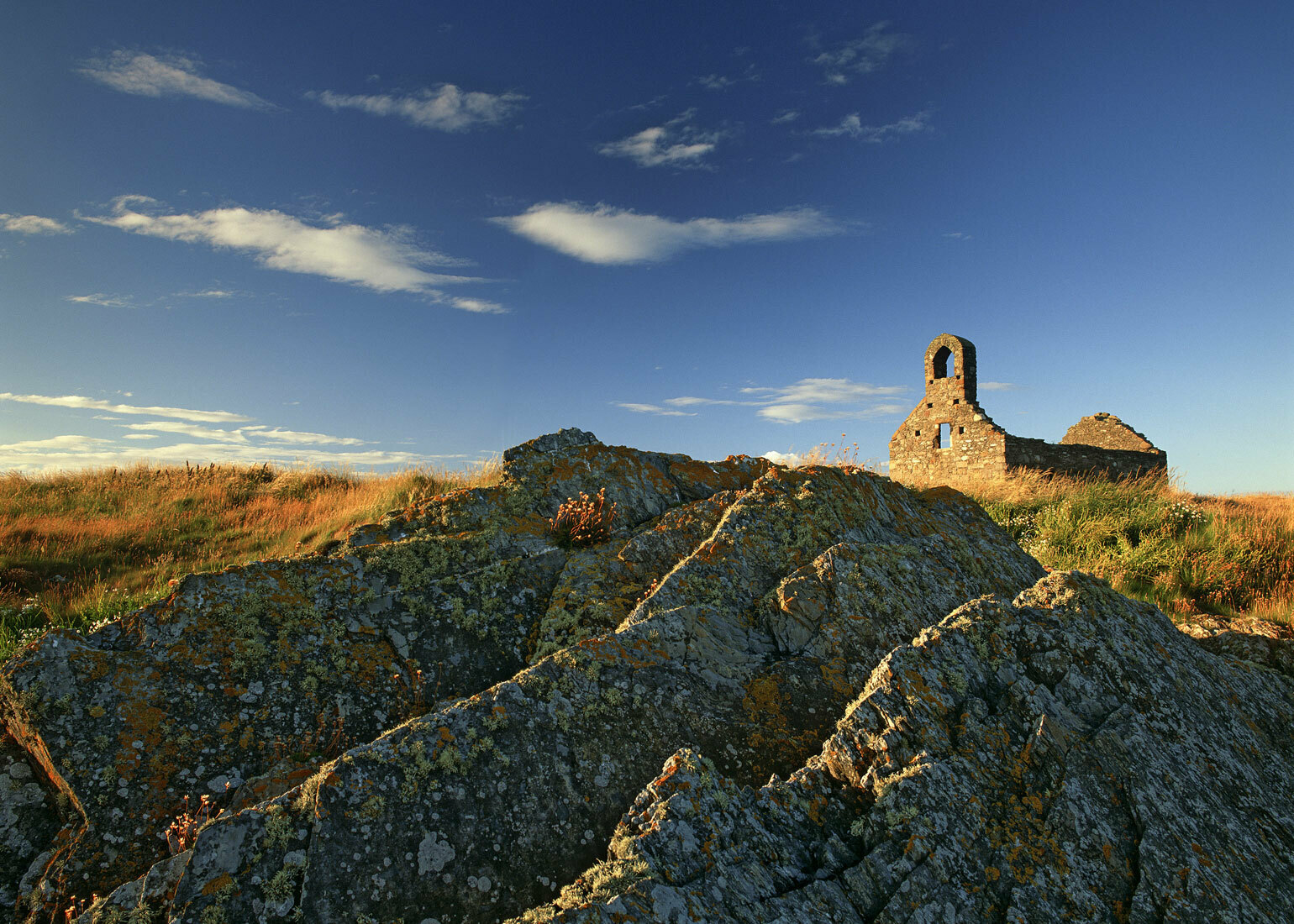About
Site Directory
Copyright © 2025 www.isleofman.com
All Right Reserved
powered by 
Copyright © 2025 www.isleofman.com
All Right Reserved
powered by 


Fort Island or St Michael's Isle is accessible by road from Castletown
St Michael's Isle (Manx: Ellan Noo Mael), or Fort Island (Manx: Ynnys Vaayl) as it is more commonly called, is one of the best scenic viewpoints in the Isle of Man. It lies to the east of Derbyhaven Bay and is approached by the same road which leads to the Golf Links Hotel on Langness. Technically, it is no longer an island as it is joined to the mainland by an extremely narrow causeway, just wide enough for single file traffic. In size, it measures a bare quarter of a mile in length.
Access to Fort Island is by way of Castletown, following the coastal road around Castletown Bay and along the crescent of Derbyhaven Bay. The views from Fort Island are spectacular. Away to the west, Bradda Head is visible above Port Erin. To the north-east, the fine, bold coastline runs up past Santon Head. The bay of Derbyhaven, dotted with small boats at their moorings, lies to the north-west. Although Fort Island is steeped in history, the comings and goings of aircraft at Ronaldsway Airport on the far side of the bay, remind us that we are firmly in the present.
There are two ancient buildings to be seen. The older is a stone-built, Norse-Celtic chapel, dedicated to St Michael and dating from around the 12th century. It is now roofless and consists of just four walls and a bell turret. The chapel would have replaced a Celtic keeill which might go back to the beginnings of Christianity in the Isle of Man several centuries earlier. There was a graveyard associated with the early keeill which contained some very early lintel graves. The graveyard, of which no trace remains visible, was used until about 1870 for the burial of shipwrecked mariners and Roman Catholics.
The other building is the fort constructed by James, 7th Earl of Derby and Lord of Mann. This dates from 1645 and was built during the civil war in England to defend Derbyhaven, which was then a major port, from the forces of the parliamentarians. Towards the end of the 18th century the fort served as a lighthouse. The Derby fort replaced an earlier one built in about 1540 by order of Henry VIII of England.
Fort Island was the site of a battle when a Scottish fleet landed there in 1275. The Manx under the command of Godred, son of King Magnus who died in 1265, the last Norse ruler of Mann, attacked the Scots but suffered a bloody defeat.